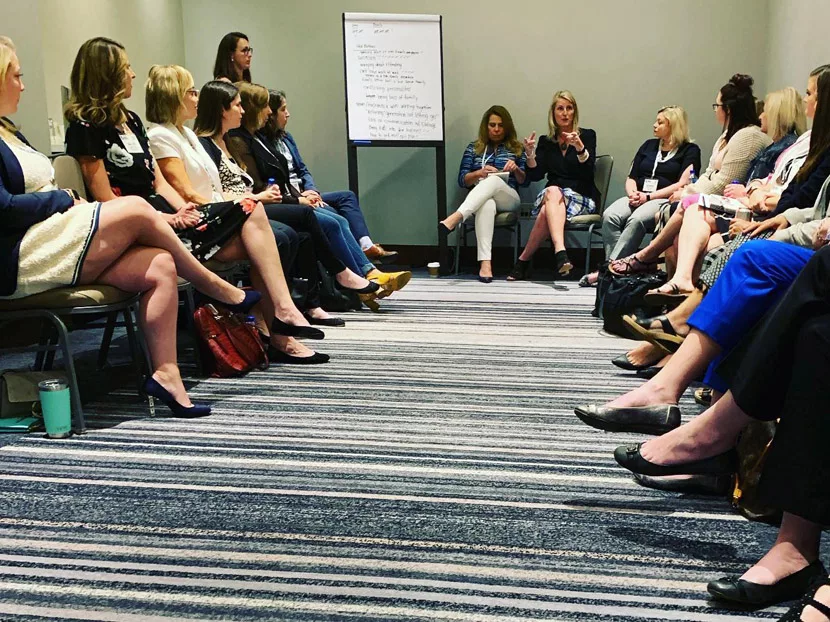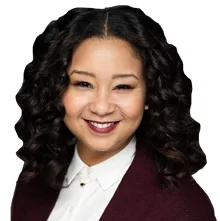Engagement is not easy to come by in today’s day and age; online or in person. And genuine interaction is even harder to come by in the current professional environment hinged on networking events and opportunities. Yet, the Mechanical Contractors Association of America (MCAA) managed to get real people to have real conversations through its Women in the Mechanical Industry (WiMI) initiative. From June 24–26, 2019, WiMI gathered more than 160 women together for its first-ever conference.
Held at Loews Chicago O'Hare Hotel, the sold-out conference was put together by MCAA and the Mechanical Service Contractors of America (MSCA). All women employed by MCAA and MSCA member companies were encouraged to attend to gain inspiration to dream big and hone skills that will allow them to become better leaders and role models.
The first day of the conference kicked off with an official welcome from Kori Gormley-Huppert, chair of WiMI, and Brian Helm, president of MCAA. The welcome was followed by a presentation from Col. Nicole Malachowski, USAF, Ret. Malachowski was the first female pilot to fly with the Air Force Thunderbird aerial demonstration team. She spoke about her experience as a woman breaking from tradition and provided lessons and takeaways that attendees could use to make sound choices and pursue their dreams.
On day two of the conference, I was able to experience the women’s empowerment for myself. I started with the morning session featuring Stacey Hanke, author of “Influence Redefined.” She presented on the Influence Model that she developed to help leaders identify and utilize their type of influence. Hanke explained that understanding one’s influence helps people to go forth with the best version of their leadership.
The core of the second day of the conference was six roundtable discussions. While presentations and panel discussions are helpful at conferences, this model stood out as a winning strategy for having “crucial conversations” as described by WiMi. The roundtable topics were: “Explore Unique Challenges of Working in a Family Business,” “Technology: Keeping it Simple & Useful,” “Advancing Your Career: Making Connections, Mentoring and Networking,” “Working in a Male-Dominated Industry: Men Working for Women,” “Navigating Work/Life Balance,” and “Leadership Strategies and Insights.”
The first roundtable I attended was about working in a family business. The roundtable started with coordinators asking attendees to lead the discussion by providing “hot button” issues affecting their business. An effective strategy, as there was a list of more than 13 topics developed, with some being co-signed as many as 10 times. The conversations ranged from succession planning to nepotism.
Next up, I attended the roundtable on working in a male-dominated industry. This was a popular session, with a large turnout of more than 20 attendees. Discussions ranged from emotional intelligence to recognizing that neither gender has to overcompensate to be respected. Some eye-openers posed by the session facilitators included accepting that shifts in gender demographics will be an adjustment for older individuals, understanding that the “Me, Too” movement has resulted in awkwardness among women and men in networking and mentoring, and knowing self-awareness is key to moving beyond gender stereotypes and assumptions.
The final roundtable I attended on navigating work-life balance addressed finding wellness symptoms in everything from mood to poop! The core of the conversation was understanding intuition and the body’s natural abilities to heal itself through rest, nutrition and habit. Discussion was framed around return on investment (ROI) and reimagining the acronym as the following: (R) Recognize and rebuild according to your intuition; (O) Observe and optimize by learning to identify energy drainers and correcting those habits; and (I) Integrate by leading from the front and from the inside out by first just showing up.
After the roundtables, I sat in on the entertaining presentation from leadership development pro Steve Thomas. Speaking on the topic of “Navigating Human Weirdness,” Thomas started the session by having attendees take a personality test to understand that everyone has a default “people mode.” Thomas explained that the goals of personality tests are to help people understand themselves, how others perceive them and how to relate to others. He explained that ultimately, personality tests should lead people to approach a workforce that is becoming dehumanized with grace; moving from seeing customers and employees to seeing people.
There was an insightful panel discussion on recruiting women into the industry to close out day two. The panel included: Laura Ceja, United Association; Sarabeth Gandara, U.S. Engineering Co.; Wendy Glauber, John W. Danforth Co.; and Ashley Martin, NIBCO. A key takeaway from panelists was the importance of meeting candidates in the communities where they are and showcasing company diversity, no matter how big or small when doing so.
Examples of recruiting opportunities ranged from office tours and lunch ‘n learns to direct marketing at universities and career days at primary schools. Panelists added that it is essential not to wait on entities to present recruiting opportunities but instead seek out ways to get the industry in front of the next generation by inviting ourselves and creating programs where there are voids.
The panel discussion marked the end of my 2019 WiMi Conference experience. However, the third day of the event closed with a presentation from networking expert J. Kelly Hoey on creating proactive and focused networks. It was announced that the second annual WiMI conference will take place June 15-17, 2020, in Austin, Texas.





